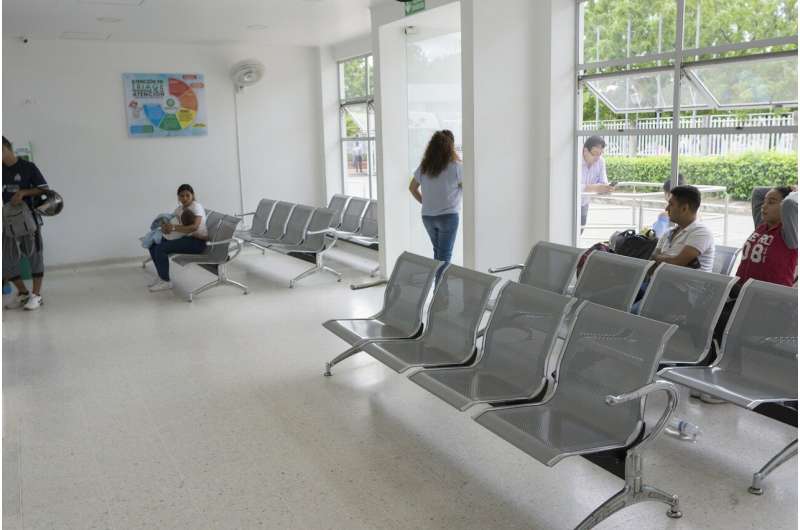This article has been reviewed according to Science X's editorial process and policies. Editors have highlighted the following attributes while ensuring the content's credibility:
fact-checked
trusted source
proofread
Utilizing data to predict hospital wait times

Headed to the emergency department (ED)? How should you decide which nearby ED to go to so that you can get in and out? New research in the journal Manufacturing & Service Operations Management uncovers how best to showcase hospital wait times to not only save your patience, but increase efficiency, more accurately route emergency vehicles and save money.
"By showcasing anticipated waiting-time estimates, patients and ambulance staff can be better informed in selecting an ED from a group of EDs, which can lead to a more uniform spread of patients across the system," says Ho-Yin Mak of Georgetown University and one of the study's authors.
"It's no secret that waiting-time estimates can help improve patients' overall satisfaction, but current methods focus on point forecasts, thereby completely ignoring several underlying factors. Communicating only a point forecast to patients can be uninformative and potentially misleading."
In this study, "Probabilistic Forecasting of Patient Waiting Times in an Emergency Department," the authors consider calendar effects, demographics, staff count, ED workload resulting from patient volumes and the severity of the patient condition.
"Our model allows for dynamic updating and refinement of waiting-time estimates as patient- and ED-specific information (e.g., patient condition, ED congestion levels) is revealed during the waiting process," says study co-author Siddharth Arora of the University of Oxford.
The authors also reiterate that this method gives low-acuity patients and first responders a more comprehensive picture of the possible waiting trajectory and provides more reliable inputs for them to make a well-informed decision.
"For emergency healthcare service providers, probabilistic waiting-time estimates could assist in ambulance routing, staff allocation and managing patient flow, which could facilitate efficient operations and cost savings, and aid in better patient care and outcomes," says co-author James Taylor, also of the University of Oxford.
More information: Siddharth Arora et al, Probabilistic Forecasting of Patient Waiting Times in an Emergency Department, Manufacturing & Service Operations Management (2023). DOI: 10.1287/msom.2023.1210



















